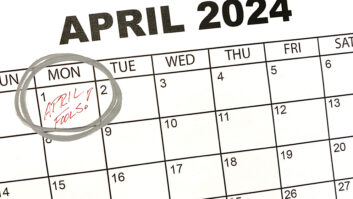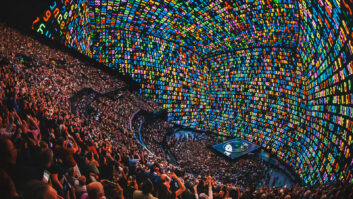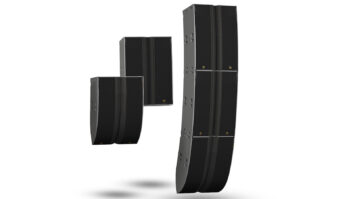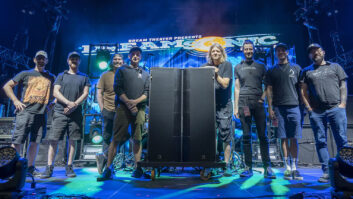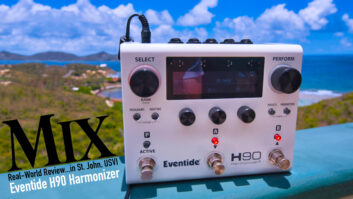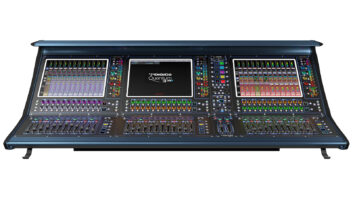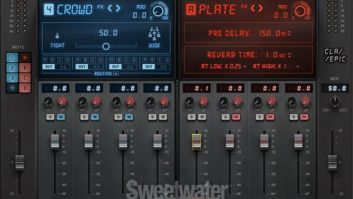
Clive Young,
Editor-In-Chief, PSN
Now safely ensconced in 2017, I’ve been looking back at last year and although there’s no avoiding the fact that a lot of 2016 was about death, there was also a last-minute micro-trend that emerged during the last two weeks of December: missing audio in high-profile entertainment.
The big one, of course, was Mariah Carey’s awkward non-performance of two songs during ABC’s coverage of New Year’s Eve in New York City’s Times Square. The chanteuse shuffled her way through her routine without singing, stating her in-ear monitors didn’t work so that she couldn’t hear playback. Meanwhile, viewers watching at home could hear her backing tracks just fine, including some pre-recorded vocals that were meant to be lip synched. Carey later alleged that she’d been sabotaged, and unsurprisingly, all production entities involved steadfastly refuted Carey’s claims in the papers and on social media for a few days until the world’s attention span drifted on to something else.
A few weeks earlier, the trailer to Tom Cruise’s next flick, The Mummy, hit the internet, garnering attention for its special effects and such. But in mid-December, IMAX unwittingly posted to its website a version of the trailer that sported botched audio with numerous channels missing. The main scene of the trailer features a plane plummeting to a fiery end, but very little can be heard other than the occasional ambient sound effect, brief music stabs and various screams by Cruise, including one that’s used twice. Amazingly, the trailer was online six days before IMAX took it down, which means pranksters had plenty of time to preserve it, and the mistaken post is now part of the Internet’s firmament forever.
Clearly everybody, be they Nineties songstresses or average movie fans, has expectations of what constitutes a full audio experience; incidents like these just happen to underline the fact a little more obviously than usual.
Thankfully, consumers, too, are becoming increasingly aware of what they’ve been missing when it comes to their audio, and that bodes well for the pro audio industry. Some say it’s been spurred by the resurgence of vinyl, which is now projected to hit $1 Billion in annual sales by the end of 2017. That may be a factor, as a generation that grew up listening to tinny MP3s gets its ears reeducated as to what constitutes ‘good sound.’
Vinyl, then, may prove to be the gateway to a far larger trend on display at CES in early January: the bolstering of Hi-Res Audio, now touted as crucial for music consumption today. At the convention, the RIAA; streaming services Pandora, Rhapsody/Napster and HD Tracks (but notably not Apple or Spotify, which both lead that marketplace); and labels Universal Music Group, Sony Music and the Warner Music Group, all teamed with the Digital Entertainment Group—an industry group of Hollywood studios and CE retailers, manufacturers and technology providers—and the Producers & Engineers Wing of the Recording Academy to back HRA.
They could all be found together at the Hi-Res Audio Pavilion that the DEG and P&E Wing sponsored, where they recreated a fully equipped recording facility on the convention hall floor to underline the benefits of proper audio. The group’s commitment was only reinforced by the roster of special guests at the pavilion; while some CES stands might bring in a reality star to gain a crowd, the HRA Pavilion served up the likes of Al Schmitt, Mick Guzauski, Gavin Lurssen, Jac Holzman, and Dion “No ID” Wilson to hold court, explaining to both the converted and uninitiated the benefits of hearing everything in the audio spectrum.
High-Resolution Audio has slowly picked up speed over the last few years in terms of consumer awareness. If that recognition continues to grow, and players and formats become more accessible to the general public both in terms of cost and education, perhaps 2017 will be the year HRA finally breaks out.
